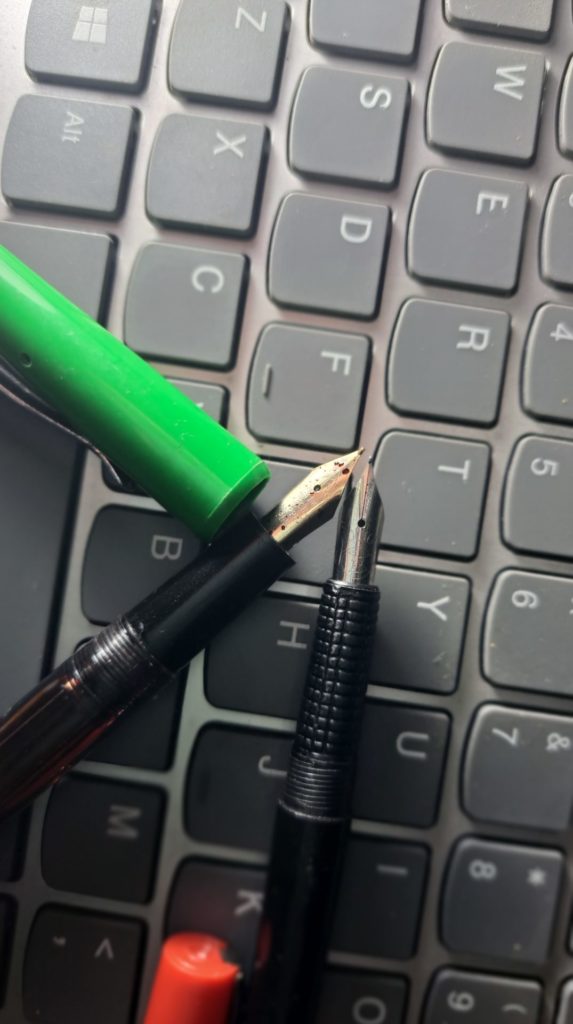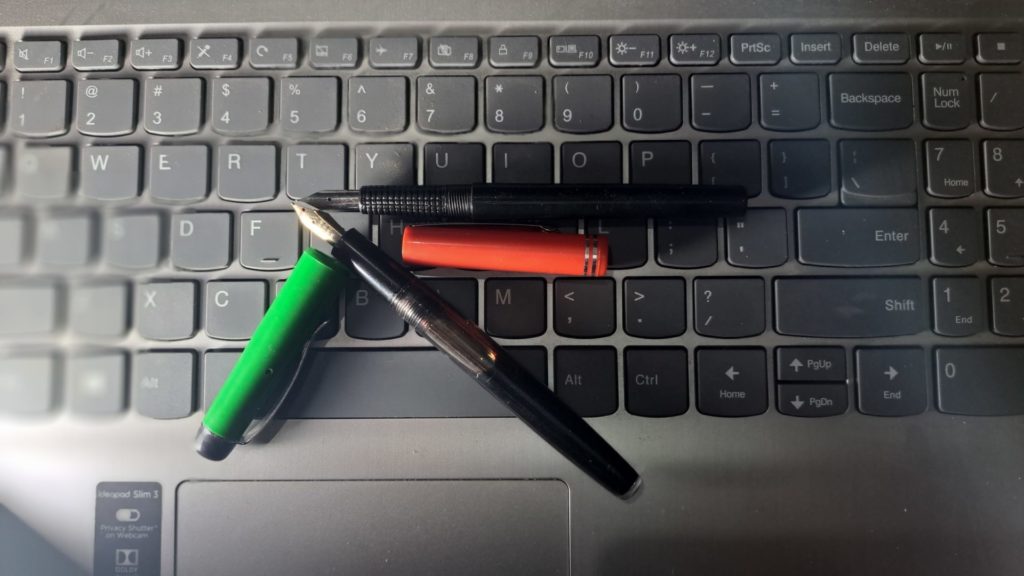
India-made pens. They fascinate me, for they are my reigning passion, the one end that justifies all means. I have spent so many decades of my life in their search – seeking them out, collecting them, getting the old dilapidated ones restored, compiling their stories, learning about their legacies, and more than anything else, writing with them. Some are regal: majestic even, while some are lowly, but love them all, I do, equally.
Naturally, when it comes to talking about them, I become a cantankerous raconteur, talking miles, losing track of space and time, and often boring my hapless audience to their wit’s end. So, fasten your seatbelts if you may, and do not tell me that you were not adequately warned before I start this one – the story about the Kalams of Kolkata.
The pens that I am going to talk about are made in India, in Kolkata to be precise. The person making them is none other than our own friendly neighborhood pen and ink merchant, Sudhin Pal. While we know him as a hyperactive and ever-affable supplier of pens and inks, what most of us do not know is that he has his own manufacturing unit in the eastern fringes of the city, from where he has been churning out fountain pens for many decades now. These are primarily lower-tier plastic-molded, generic fountain pens – the no-frill implements that are targeted at the lowest rung of the market. These pens come fitted with a sturdy clip, a plastic feed, and an unbranded tipped nib that is sourced from Sattur in Tamil Nadu.

While most of the production of small units like these (and there are some others that have survived the dry spell too) are sold to the whole sellers in the city, some Kalams of Kolkata make their way to the thriving markets in the south – Tamil Nadu and Kerala primarily – where school children still use such pens regularly. As a matter of fact, some of these pens also make their way to neighboring countries like Bangladesh and Sri Lanka where too, there is a good amount of demand for such pens. And why not? The pens are sturdy, they write well, and are ergonomically designed and crafted, making up in usability what they lack in accouterments. However, the real reason for their runaway and continued popularity is the fantastic price point at which they are sold. To put things in the right perspective, these pens are among the cheapest that I have seen in my life – certainly cheaper than the cheapest offerings from China. As a matter of fact, one wonders how at the price that they are offered, it is even possible for the manufacturer to compile every component to get a working model going.
Once upon a time, Kolkata was the center for the manufacture of such pens which used to find ready markets not only in the neighboring countries in the east and the south but also in the west of India – Pakistan, Afghanistan, et all. The market in India too was a huge one and it will suffice to say that those were the days of Glory and Artex – pens of our school days that used to be manufactured in these scattered units. As a matter of fact, even Sudhin Pal was a part of this network, but that was before the Chinese deluge and the dot pen tsunami decimated the market for the Kalams of Kolkata. The numbers that old-timers talk about are mindboggling and so is the way how almost all the manufacturers folded up without a trace. As a matter of fact, that Sudhin Pal has survived so long is nothing sort of a miracle and the way he is using the social media channels to turn around and not only eke out a living, presenting his antediluvian pens in the process but is taking the fight to the enemy camp as it were, is commendable if anything.

I have inked up one of Sudhin Pal’s creations and have been writing with it for the last couple of days. No, the nib does not give the same pleasure that one derives from writing with a gold nib with a sweet spot, and the pen looks like an ordinary four-wheeler in the company of Rolls Royce cars, but what the heck? It too writes. As a matter of fact, when we were in school, it was pens like these that were regulation fire-sticks for most of us. We knew how to tune the tines by sliding a razor blade to regulate the ink flow, we knew how to dismantle the nib and feed to clean up the dried-up ink deposits, we knew how to turn these bargain basement-priced implements into champions and write miles to soar through our examinations. We knew because we had no choice, and even changing nibs was not an option – we had to learn how to get the best out of what we had by changing the pressure that we exerted to write. And no, we didn’t even know what fountain pen-friendly paper was, we had to write on whatever the schools and colleges supplied us with.
Those were the days. And these were the pens. If you want to talk a walk down nostalgia’s lane, get one. I am beginning the new year with my Kalams of Kolkata.
For more watch the video: https://www.youtube.com/watch?v=RMVR1pFM-y0
